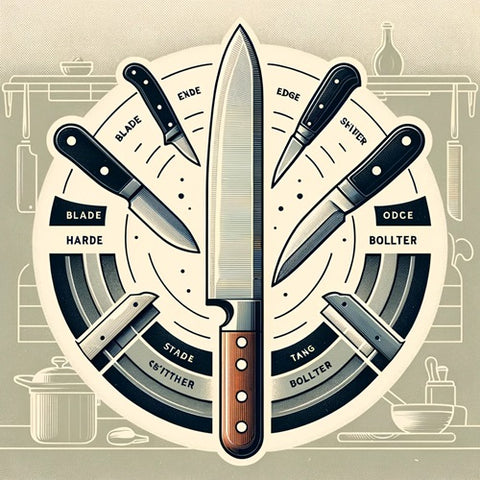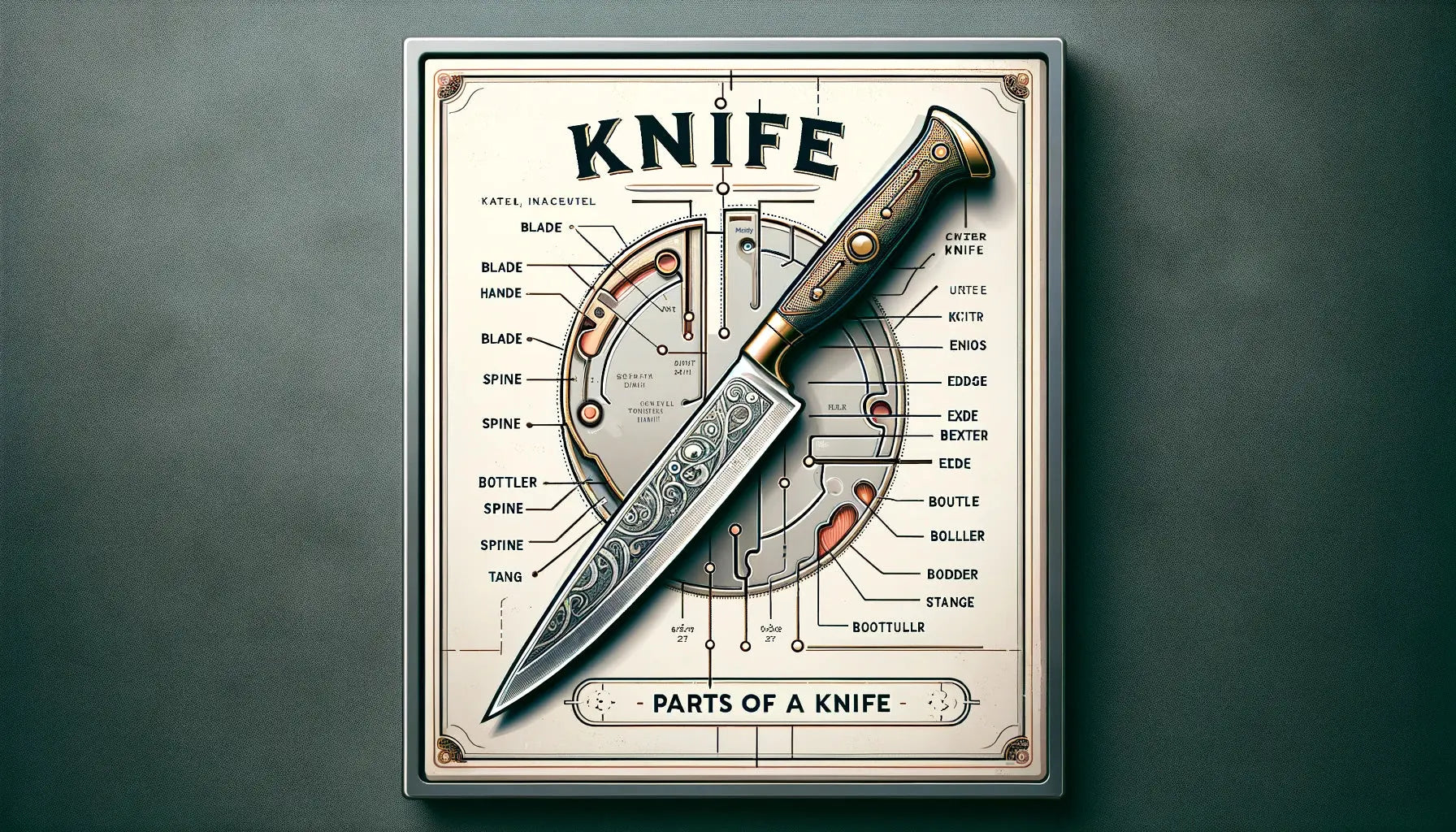Welcome to our culinary journey where today, we're slicing into the world of knives - not just any knives, but the kind that make a chef's heart race a little faster. Whether you're a seasoned chef or a home cook ready to up your game, understanding the anatomy of a knife is like getting to know an old friend on a deeper level. So, grab your favorite knife, and let's dissect it.
At first glance, a knife might seem like a straightforward tool, but its design is a marvel of form meeting function. Each part, from tip to handle, has a specific role that aids in the culinary arts.
Parts of a Knife and Their Function
Each part of a knife has a specific role, ensuring that we can chop, slice, and dice with precision and safety. From the tip of the blade to the end of the handle, every component is designed with purpose in mind.
- The Blade: The central part of the knife, used for cutting. It's typically made of stainless steel, carbon steel, or ceramic.
- The Tip: The pointed end of the blade, ideal for detailed work like scoring or peeling.
- The Edge: The sharp side of the blade that does the cutting. It can be straight or serrated, depending on the knife's intended use.
- The Spine: The top part of the blade, which adds weight and balance to the knife.
- The Heel: The rear part of the blade, used for tasks that require more force.
- The Bolster: A thick junction between the blade and handle that provides balance and a safe grip.
- The Handle: Where you hold the knife. It can be made from various materials for comfort and grip.
- The Tang: The part of the blade that extends into the handle, offering balance and stability.
- The Rivets: The metal pins (if present) that secure the handle to the tang.
- The Pommel: The butt of the handle, sometimes used for hammering or crushing.

What Are the Five Points of a Knife?
When we talk about the five points of a knife, we're referring to the key features that define its functionality and design. These include:
- The Blade: The essence of the knife, designed for slicing, dicing, and chopping.
- The Edge: The sharpened side of the blade, crucial for the knife's cutting ability.
- The Handle: The part you grip, which should offer comfort and control during use.
- The Tang: The backbone of the knife, providing balance and durability.
- The Bolster: The guard between blade and handle, ensuring safety and balance.

Understanding these components not only helps in selecting the right knife for the task at hand but also in maintaining and caring for your knives properly. Each part, from the tip of the blade to the end of the handle, plays a crucial role in making your culinary adventures successful and enjoyable.

